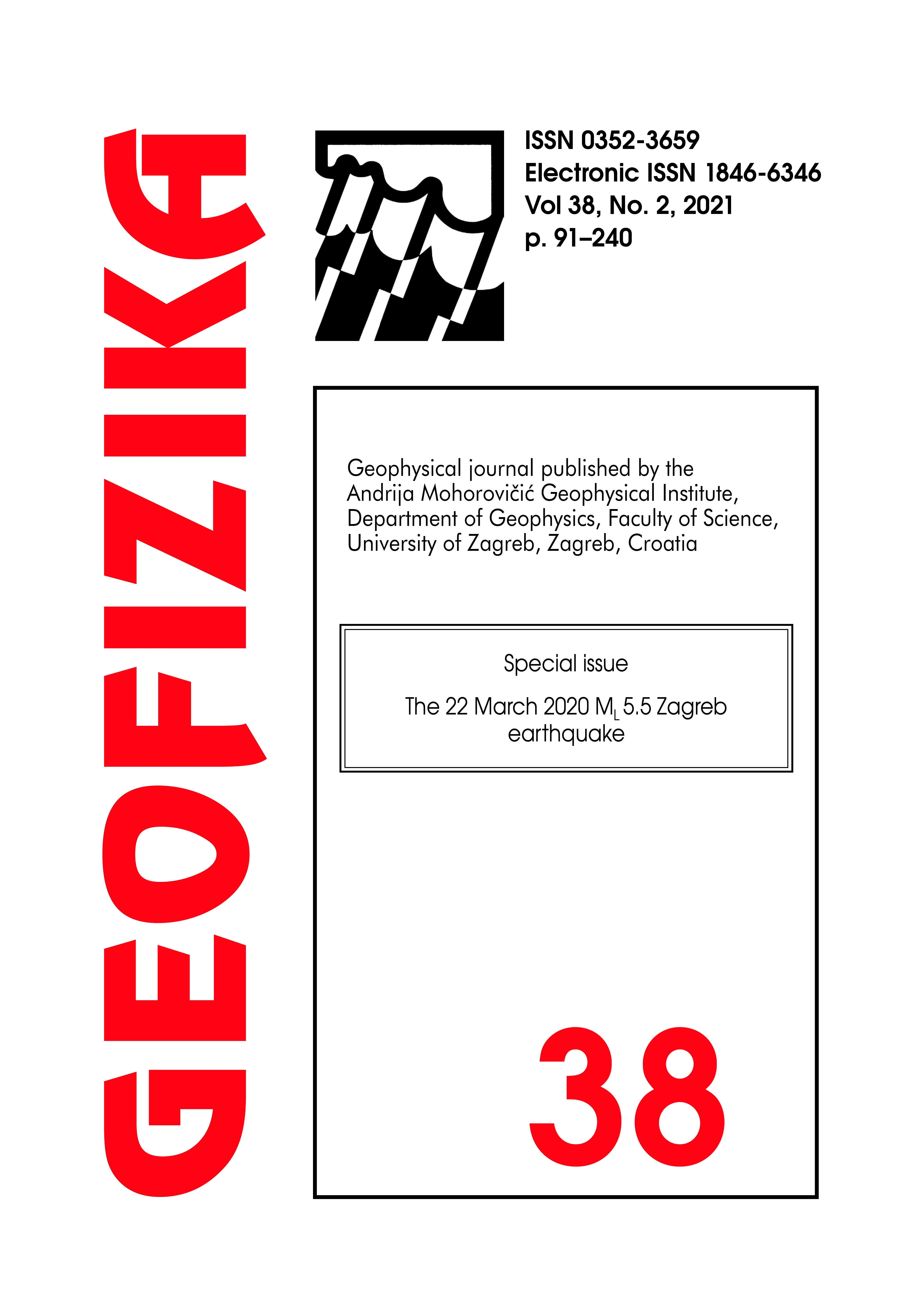Properties of the Zagreb 22 March 2020 earthquake sequence – analyses of the full year of aftershock recording
DOI:
https://doi.org/10.15233/gfz.2021.38.6Keywords:
Zagreb earthquake, causative fault, focal mechanisms, aftershock sequenceAbstract
Although strong and damaging earthquakes have hit Zagreb in the past, the 22 March 2020 earthquake (Mw 5.4) is the first one that was recorded by a modern digital local seismic network, and which could be analysed not only by macroseismic methods, but also by microseismic ones. Herewith we used the 3003 carefully analysed and located events from the first year of the aftershock sequence to learn more about the aftershock rate decay, their magnitude distribution, focal mechanisms and hypocentral locations. The aftershock activity rate was found to closely follow the modified Omori law, and fault-plane solutions for 10 events indicated prevailing pure-reverse faulting. Our analyses suggest that the reverse North Medvednica boundary fault (NMBF) was the causative fault, as it fits with the focal mechanisms and with the geometry of aftershock locations.
The epicentral area was of a triangular shape with the mainshock in one vertex, and the opposite side of the triangle lying parallel to the surface trace of the NMBF. The hypocentres of aftershocks were predominantly located in the hanging wall of the fault. No surface break was observed, so the rupture is assumed to be buried. These facts were interpreted as a combination of the effect of conservation of mass (seismic flow) requiring some fault-parallel stress redistribution and transfer of material, and the fault loading and activation in the compressive environment controlled by the stress partition at the brittle-ductile transition zone within the crust. The later process involves compression within the hanging wall during the interseismic stage when the fault segment in the brittle crust is locked, followed by sudden dilatation during the rupture phase.
Downloads
Published
Issue
Section
License

This work is licensed under a Creative Commons Attribution-NonCommercial 4.0 International License.

